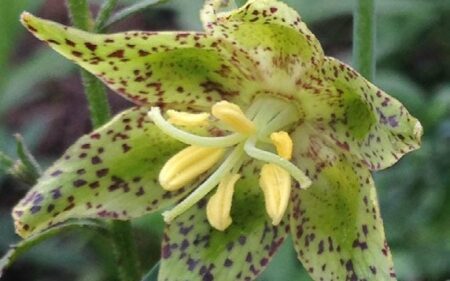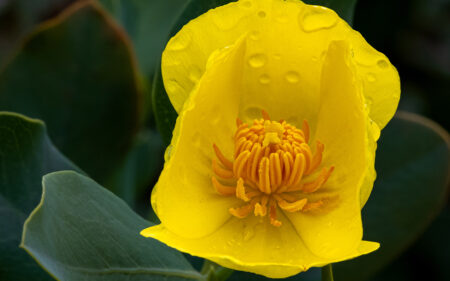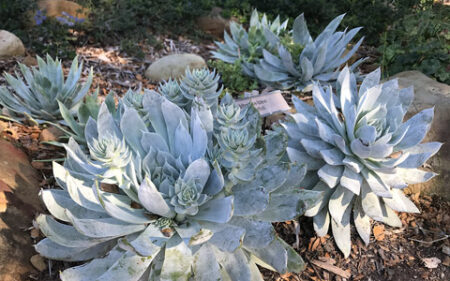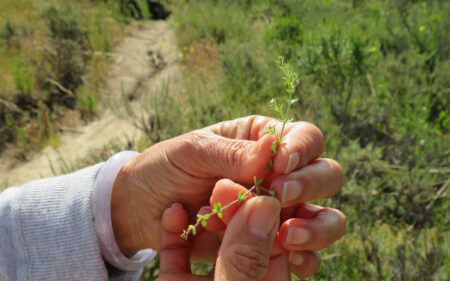After the Rains: California’s Rain Season
The 2023 rainy season has been marked by a series of atmospheric rivers that have brought abundant moisture to California. With this, the Garden experienced its strongest rainfall event of the season on January 9, receiving 9.48” according to the Garden’s Remote Automatic Weather Station. This precipitation event brought down several mature coast live oak trees, deposited abundant sediment, washed away gravel on several trails, and damaged safety railings on Mission Dam. Despite these areas of concern, the Garden fared fairly well due to early preparations. Prior to the storm, our staff mitigated runoff by installing sand and rock bags, digging water diversion bars, and removing sediment in basins deposited in past storms. We are fortunate to have such a devoted team stewarding the oldest native plant public garden in the United States.
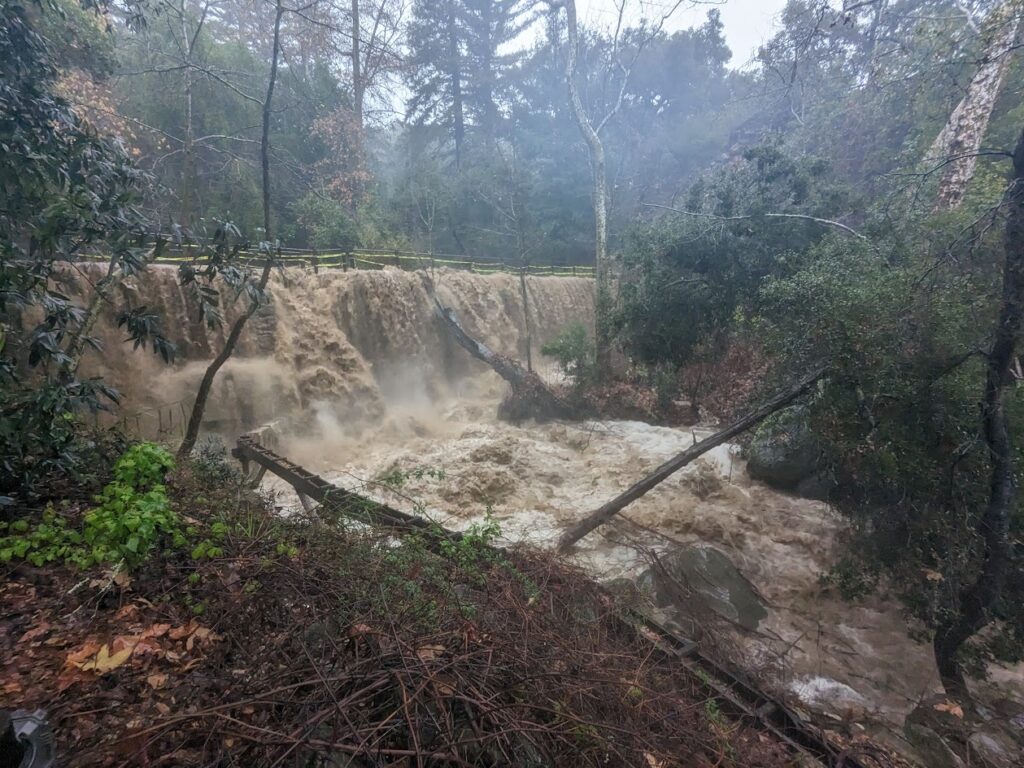
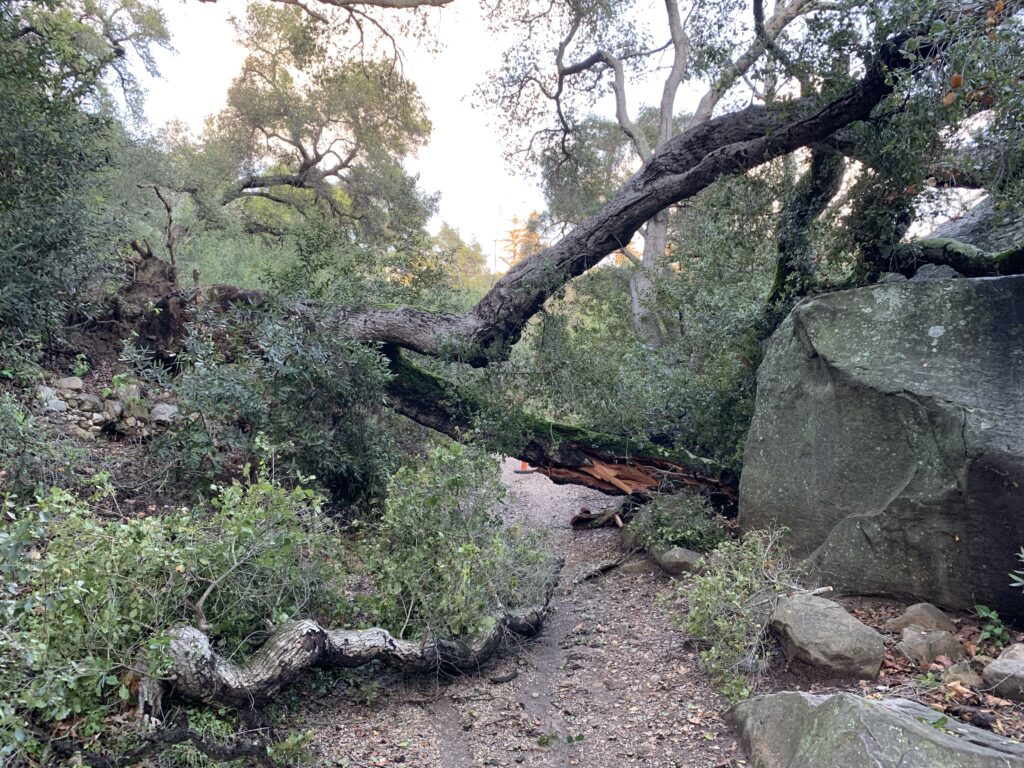
A Look at Historical Water Years Data
Hydrology, a branch of science that studies trends and properties of the earth’s water, has rainfall data dating back hundreds of years. This data is collected from different monitoring sites across a region. For instance, in the region surrounding the Garden (Santa Barbara county) we have nearly 100 working sites. One way scientists organize this data is looking at trends across what is called “water years”. A water year (WY) is a term referring to the surface-water levels of a 12-month period beginning October 1 and running through September 30 of the following year. For instance, WY2023 would include data collected from October 2022 to September 2023.
Fun fact: Santa Barbara Botanic Garden’s average annual WY total is 20.76 inches going back to 1945!
The so-called “Ark Storm” in 1862 generated so much precipitation that people were navigating the streets of Sacramento and almost the entire Central Valley by boat. More recently, Santa Barbara has experienced annual ranges from a high of 46.97 inches in WY 1998 to just 6.41 inches in WY 2007 (data from SB County Water Resources). Interestingly, in that record WY 1998, the City of Santa Barbara Water Resources recorded just over 10 inches by the end of January. This certainly helps put the current 23.48 inches (as of January 13) in better context compared with the near-term historical records!
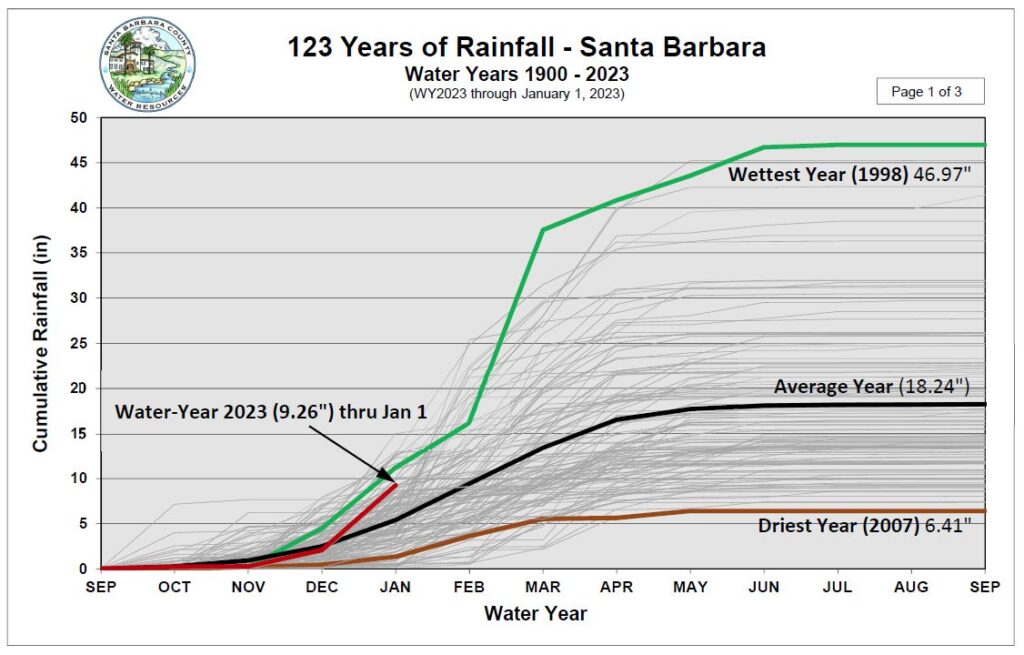
Then, of course, there are the dry years, when the state receives very little rain. On a graph, the average is a line drawn through a cloud of points that are distributed somewhat randomly. That said, there are some observable trends of 2, 5, 15, or 30-year cycles as researchers and have keenly observed. Even John Steinbeck noted of the Salinas Valley, “The water came in a 30-year cycle. There would be five to six wet and wonderful years when there might be 19 to 25 inches of rain, and the land would shout with grass. Then would come six or seven pretty good years of 12 to 16 inches of rain. And then the dry years would come … ” in his book, East of Eden. However, those cycles seem to change through the centuries.
What Nature Tells Us About Rain
The trees know this story well. They have it tattooed under their bark in the form of tree rings. Researchers are able to study the ring patterns of particular trees to get a sense of what past precipitation patterns have been. By using tools known as increment borers that extract a small sliver of the tree, these scientists can then study the width of rings to understand how much rain fell in a given year. By sampling a large number of trees over a significant geographic area, they begin to reconstruct the climate over centuries, even as long as 1,200 years. These reconstructions reveal the story of rainfall’s extreme nature in California. (See: Williams et al 2020 and Griffin/Anchoukitis 2015, and https://www.nytimes.com/interactive/2022/07/20/opinion/ancient-trees-climate-change.html for more detail on this topic).
Gardening in California’s Unpredictable Climate
Some say that knowledge is power, but knowledge can also be overwhelming and disorienting. As humble gardeners, what can we do with this information? First and foremost, it should be somewhat clear that native plants, which have evolved to the conditions of our local environment, are a superior choice for landscaping in our region. In particular, utilizing species that also grow in neighboring open spaces and habitat patches are the hearty stalwarts most likely to survive in your region. We suggest taking some time to get out into your local open spaces and observe what’s growing and what looks good throughout the years of boom-and-bust water year cycles. When establishing these plants, it’s not a bad idea to consider providing some supplemental irrigation, particularly if the rainy season is not so wet.
Another recommended strategy is to plan for the rain, or lack thereof. Utilizing principles of passive rainwater harvesting (basins, swales, other topographic features) and active harvesting (barrels, cisterns, etc.) can be beneficial in wet or dry years. When rainfall is abundant, or even “average,” these strategies can reduce erosion and ensure greater absorption of life-giving water into deeper soil layers. During dry spells, rainwater harvesting takes advantage of the rain that falls.
At the end of the day, the extreme ends of California’s weather can be devastating for a host of reasons. Too little water puts stress on plants, animals, and communities. Too much water can result in catastrophic flooding, debris flows, and complete reorganization of habitats. In the Garden, overall we celebrate the massive rains that we’ve been experiencing, but we are aware that they come at a price.
At the end of the day, the extreme ends of California’s weather patterns present gardeners with some unique challenges. However, by incorporating native plants into your garden and working with the ebbs and flow of rainfall you can create a sustainable, beautiful habitat that is better equipped to protect natural resources while supporting biodiversity. For ideas, tips, and tricks on water wise native plant gardening, come by the Garden, follow us on social, or send us a note. In the meantime, we hope you’re staying safe and are able to enjoy these massive rains we’ve been experiencing.
 Donate
Donate